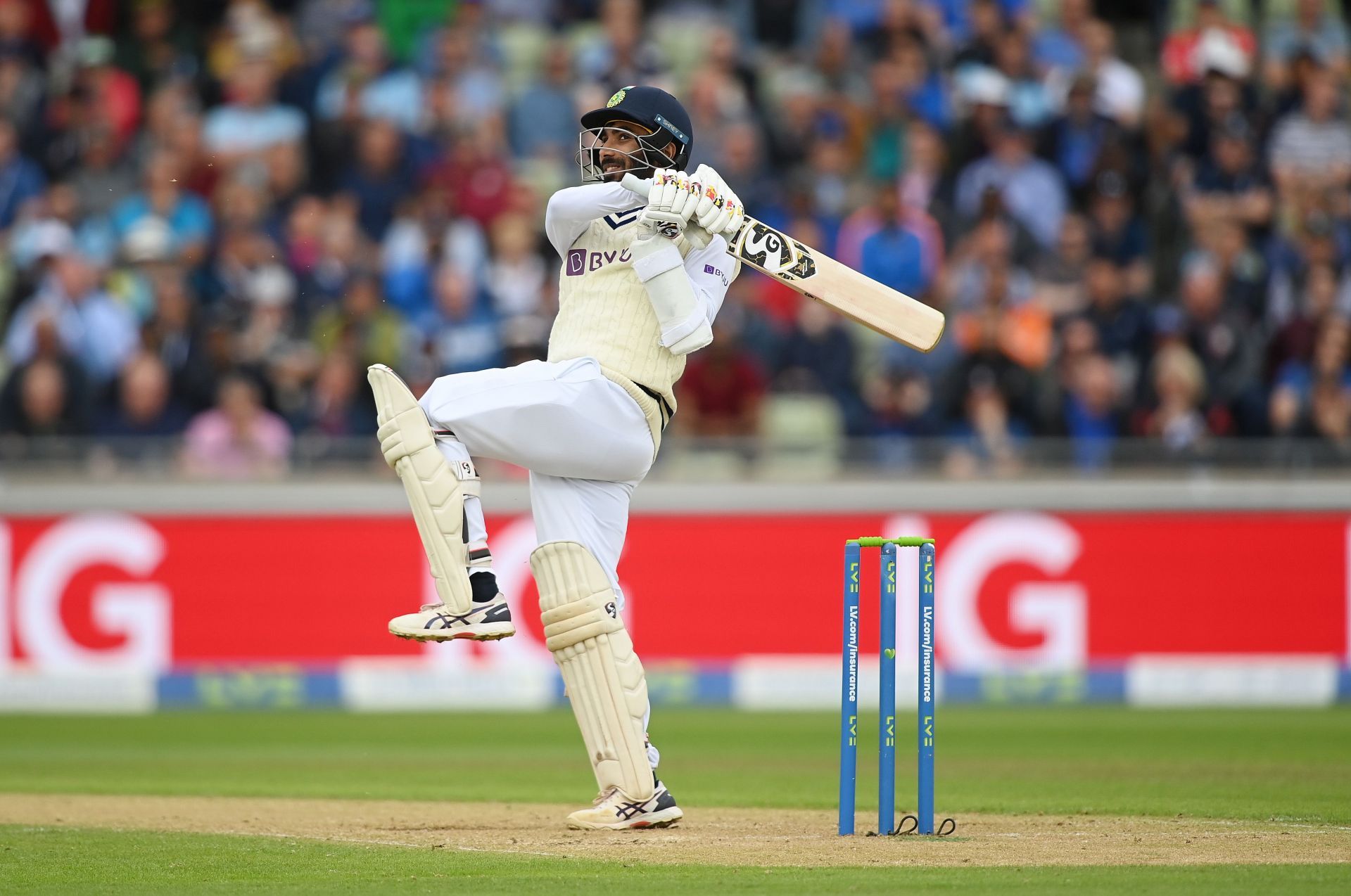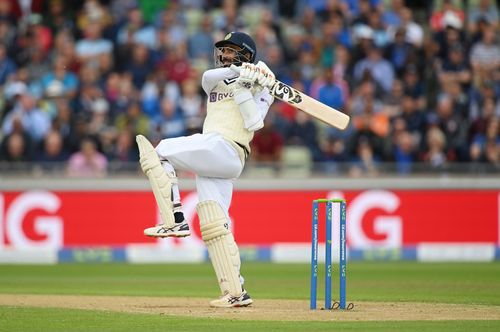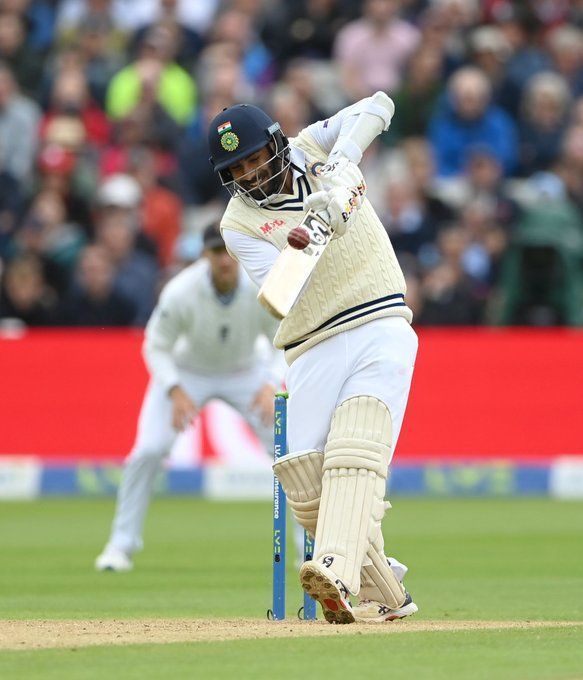
Jasprit Bumrah proves short-ball tactic is not as fashionable as it looks

16th August, 2021, the 2nd Test between India and England has ebbed and flowed beautifully, but when Jasprit Bumrah walks out to bat, with India tottering at 209/8, there is a sense that the scales might be tilting England’s way.
Prior to Bumrah’s arrival, England have been immaculate with their lines and lengths. Rishabh Pant, who was expected to lead India’s charge, was dismissed by Ollie Robinson via a ball that seamed away in the off-stump channel. A few overs later, Robinson, sticking to his stump-to-stump line, outwits Ishant Sharma too.
So, this seems England’s game to lose. Their batting hasn’t really set the world alight but Joe Root is in sparkling form. The fourth-innings target is also well under 200, meaning that they only require a couple of handy partnerships to scrape past the finish line.
But then, cricketing logic and wisdom takes a backseat. Ego and the fire to settle scores enters the equation.
A couple of days ago, when James Anderson was batting, Bumrah unleashed a fiery short-ball onslaught. Not only did the Indian pacer make Anderson hop to his tunes. He bowled so many no balls that it felt it was a tactic to rough up the veteran.
England’s leading wicket-taker ultimately fell to that tactic, with Mohammad Shami being the beneficiary. As he walked off, though, he exchanged a few choice words with Bumrah. England, for those unaware, had Mark Wood up their sleeves – someone capable of bowling quicker than all those playing that particular game.
Hence, it only seemed right that they would give Bumrah a taste of his own medicine, force him into mistakes out of fear and gallop their way to victory. The only problem, however, was that this tactic feels a little futile.
Not because Wood isn’t capable of bowling quick or because he can’t bowl threatening short deliveries. But because that sort of plan also leaves plenty of rough edges – edges that have no guarantee of smoothening out by themselves.
You could either bundle out the lower-order batters in the blink of an eye. But you could also concede runs very quickly. There is nothing in between, meaning that the rewards are high but the risk is also extraordinarily high.
Over the course of the next hour, Bumrah and Shami plunder England to all parts. They slash wildly but still keep finding the gaps regularly. Wood and England get irritated because India don’t back down. They try different things but each leads to the same outcome – Indian runs and a feeling that victory is slipping out of England’s grasp.
Cut to a year later. We are now at Edgbaston. BazBall has officially permeated the English cricketing set-up. Root is playing reverse-sweeps off fast bowlers. Jonny Bairstow is treating Test cricket like an elongated form of T20 cricket. Ben Stokes is charging fast bowlers and clattering them over their heads.
Their bowling has also become a lot more aggressive. Anderson and Stuart Broad aren’t as averse to pitching the ball fuller anymore. Matthew Potts bowls with his heart on his sleeve and Stokes has assumed the role of an enforcer.
What hasn’t changed, though, has been England’s proclivity to turn to the short-ball ploy whenever lower-order batters have come out to bat. It happened against New Zealand too. But what Bumrah did on Saturday might be the most damning assessment of how this strategy is simply not working.
In the past few years, no team has a worse bowling average when bowling to lower-order batters than England. A part of it is because they move away from what they’ve been doing to get into those sorts of positions.
Jasprit Bumrah capitalised on England's short-ball barrage
As soon as Shami began batting on Day 2, England were reluctant to pitch the ball in areas where they could’ve extracted movement. At first, it seemed a prudent tactic, considering the new ball was still a few overs away. But when Broad began banging the new ball into the track, it signalled that England had simply not learnt their lessons. It ultimately led to a 35-run over, with Bumrah creating an unexpected world-record.
With all the emphasis on stats and numbers these days, it might be wise if England take a look at how Bumrah operates when pitted against lower-order batters.
Since his debut, Bumrah has dismissed batters batting at No.7 or lower 45 times. Of these, 22 have either been bowled or dismissed LBW. 12 batters have been caught behind, indicating that Bumrah, especially against lesser-established batters, just does not give the stumps away. Shami and Mohammed Siraj, too, incessantly attack the stumps - something that has allowed India to get through opposition teams' lower order briskly.
Mitchell Starc, another excellent bowler to lower-order batters, is also very similar in this regard. Against batters batting at Nos 9, 10 and 11, he averages 5.4, 6.47 and 2.42, respectively. He has taken 59 wickets and 32 of them have either been bowled or been dismissed LBW.
In contrast, England only bowled a handful of balls that would’ve hit the stumps on Day 2 at Edgbaston. Funnily enough, one of those was to Ravindra Jadeja, who was batting on 104, and happens to be one of the cleanest ball-strikers India has currently.
So, when a batter of Jadeja’s class can get dismissed by a length delivery that shapes into him and beats his bat-swing, surely the lower-order batters also can be sent back using a similar modus operandi?
There are many reasons why this tactic of bowling short to lower-order batters is not working as much as it once did. Bumrah is a prime example. When he started off, he wasn’t considered someone who could hold his own with the willow. Gradually, though, he has become someone who can support a front-line batter, if needed.
Akin to Bumrah, there are countless other bowlers who have consciously improved their batting, thereby adding another dimension to their game. White-ball cricket, or specifically T20 cricket, has played a part too, considering only a select few are able to warrant a place as specialist bowlers.
That, coupled with the fact that lower-order batters are no longer scared to stand toe-to-toe with their counterparts and swing at short deliveries, means that this short-ball tactic has more chances of backfiring. Unless, of course, they are used as a surprise weapon.
What they don’t really fancy is making decisions. Should I leave or should I play? Is this ball going to deck into me or is it going to jag away? Had lower-order batters found the answers to these questions consistently, they wouldn’t have been lower-order batters anymore.
But for some reason, this examination didn’t happen at Lord’s in 2021, and neither did it materialize at Edgbaston in 2022. On both occasions, England perhaps overcooked it, leaving themselves with a slightly sour taste.
A year ago, they couldn’t recover. It might not have reached that stage at Edgbaston but you wonder how long they can keep giving away cheap runs, especially after doing the hard work earlier in the innings.
If anything, this Bumrah assault has only proven that this short-ball tactic is perhaps not as fashionable as it looks or as it once was. There could be a time when it becomes the vogue again. For now, though, it might not be what is required.
